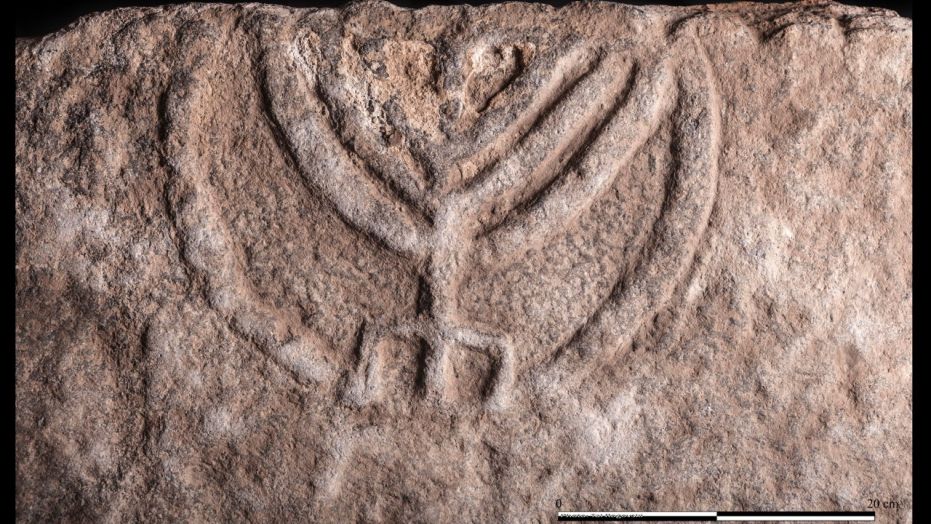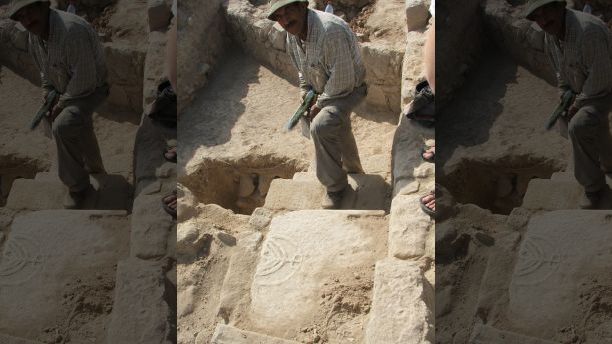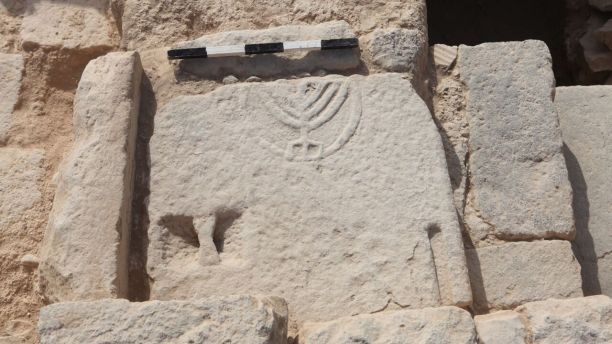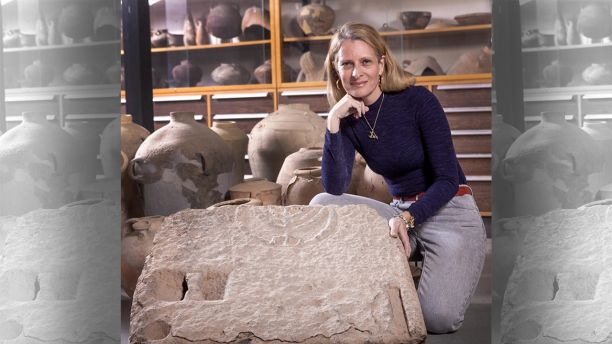ANCIENT TOMB DOOR WITH STUNNING MENORAH CARVING REVEALED IN ISRAEL
by James Rogers

As the Jewish holiday of Hanukkah comes to a close, the discovery of an ancient tomb door with a stunning menorah carving is providing a fascinating glimpse into Israel's rich history.
The basalt tomb door, which is undergoing preservation work, was recently put on display by the Institute of Archaeology at Hebrew University, in Jerusalem.
The door was discovered in Tiberias in Israel's Galilee region in 2010 by archaeologists from the University, but was only revealed to the public a few weeks ago, said Dr. Katia Cytryn-Silverman, senior lecturer at Hebrew University's Institute of Archaeology and Department of Islamic and Middle East Studies.
AMAZING WESTERN WALL DISCOVERY: NEW SECTION, ANCIENT THEATER, UNCOVERED IN JERUSALEM
Cytryn-Silverman, who leads the ongoing Tiberias excavation project, explained that the door attracted plenty of attention when it went on display.

"As this happened toward the Jewish Holiday of Hanukkah ─ which celebrates the liberation and the rededication of the Second Temple by the Maccabeans (second century BCE) and the miracle of the lasting oil, which burned in the Temple's menorah for eight days ─ we decided to bring the finding to public knowledge, as a good wish for Hannukah and for the Holiday Season," she told Fox News, via email.
The tomb door is ornamented with a depiction of the seven-branched menorah that stood in the ancient Jewish Temple, one of the key symbols of Judaism. (A nine-branched menorah is lit to celebrate Hanukkah, which this year started on Dec. 12 and will end on Dec. 20.)
The artifact also serves as a reminder of Israel's multicultural heritage, Cytryn-Silverman said.
RARE FIND AT KING SOLOMON'S MINES: ANCIENT PREGNANT WOMAN'S REMAINS

Likely part of a Jewish tomb from the second to fourth centuries, the door was discovered during the excavation of a former mosque and sugar works dating back to the seventh century.
"We found that the top step of a stairway leading to a small room was actually a portion of a basalt Jewish-tomb door," Cytryn-Silverman explained.
"Such tomb doors, probably originating from the Jewish cemetery to the north of the classical city [of Tiberias], had already been brought to this area during the early eighth century, when the Umayyads transformed the simple mosque of the seventh century into a monumental mosque," Cytryn-Silverman explained. The slab was used as the base for a pillar within the mosque, she added.

At its height, in the eighth century, the Umayyad Caliphate stretched across a vast swathe of the Middle East, North Africa and Spain.
The tomb door's colorful history, however, did not end there. The mosque was destroyed by an earthquake in 1068 and subsequently abandoned. But then, during the Crusader era, the site became part of a complex devoted to sugar production.
Cytryn-Silverman cites a twelfth-century sugar delivery request from Knights Hospitaller in Jerusalem to their facilities in Tiberias and Mount Pelerin, Lebanon.
DRONE FINDS MYSTERIOUS ANCIENT STRUCTURE AT ISRAELI MILITARY TRAINING GROUND
The site's use ended when the building collapsed at the start of the thirteenth century.
Cytryn-Silverman told Fox News there are still plenty of questions to be answered about the door. "The fact that this is the one chosen for a top step is also challenging for our modern mind: was this a positive or negative appropriation of the menorah?" she said. "Were they stepping on purpose? Did the room serve a special function? Were the inhabitants of the house actually aware of its importance? Was this just a beautiful ornamented piece?
While these questions are still hard to answer, the very use [of the door] at this place, and our eventual exposure, revived its long trajectory, going from Jewish hands, to Muslim, and then to Christian owners."
The tomb seal is one of a host of fascinating archaeological finds in Israel in recent months. Archaeologists, for example, recently used a drone to locate a mysterious ancient structure in the heart of an Israeli military training area.
INCREDIBLE 1500-YEAR-OLD CHRISTIAN MOSAIC UNCOVERED IN ISRAEL
Last month, new evidence dated Christ's tomb in Jerusalem's Church of the Holy Sepulchre to the Roman era, matching historical records.
Archaeologists also recently uncovered a stunning 1,500-year-old Christian mosaic in the ancient Mediterranean coastal city of Ashdod-Yam, now part of the modern city of Ashdod.
Other finds include the skeleton of a pregnant woman, dating back 3,200 years, in Israel's Timna Valley, at a place once called King Solomon's Mines.
LOST ROMAN CITY THAT WAS HOME TO JESUS' APOSTLES FOUND, SAY ARCHAEOLOGISTS
In October, archaeologists in Jerusalem announced that they have uncovered a new section of the Western Wall that has been hidden for 1,700 years.
Some experts also believe they have found the lost Roman city of Julias, formerly the village of Bethsaida, which was the home of Jesus' apostles Peter, Andrew and Philip.
James Rogers writes for Fox News. This article appeared December
19, 2017 and is archived at
http://www.foxnews.com/science/2017/12/19/ancient-tomb-door-with-stunning-menorah-inscription-revealed-in-israel.html